
As Beirut reels from a massive explosion that killed at least 100 people and injured thousands, we get an on-the-ground update from pediatrician and writer Dr. Seema Jilani, who treated her own daughter for injuries after the blast. “It was extremely packed because we’re just coming out of a four-day lockdown,” says Jilani. “Everybody was out.” Lebanon’s Prime Minister Hassan Diab called the explosion a “national catastrophe.”
Transcript
AMY GOODMAN: A warning to our listeners and viewers: We’ll be describing graphic scenes, as we turn now to Beirut, Lebanon, where more than 100 people have died after a massive explosion at the city’s port. Videos of the explosion show a rapidly expanding shock wave engulfing entire high-rise buildings, leaving behind a pink mushroom cloud rising far above Beirut’s skyline. Over 4,000 people have been injured. Hundreds remain missing. The blast leveled buildings, overturned cars, shattered windows miles from the blast site. An estimated 300,000 people have lost their homes.
Lebanon’s Prime Minister Hassan Diab called the explosion a “national catastrophe.” He said it was triggered by 2,700 tons of highly explosive ammonium nitrate, inexplicably left unattended in a warehouse for six years. An investigation has been launched to determine what triggered the blast. The explosion carried the force of a 3.5 magnitude earthquake and was felt as far away as Cyprus, more than 100 miles off Lebanon’s coast. Lebanese film director Philippe Aractingi said Beirut looks like a war zone.
PHILIPPE ARACTINGI: I’ve seen war. I’ve filmed war. In 2006, I went to the South Lebanon to see this. But it took 30 days to do the same destruction. We had it in one explosion. It is a catastrophe. I’ve never seen something like that.
AMY GOODMAN: That’s Lebanese film director Philippe Aractingi.
The explosion completely destroyed the Port of Beirut, a main economic lifeline to Lebanon. The blast occurred at a time when Lebanon was already facing an economic, political and public health crisis with COVID-19 cases on the rise.
We go now to Beirut, where we’re joined by Dr. Seema Jilani. She’s a pediatrician and writer who treated her own daughter, who was injured in the blast. Seema was able to share with us this tragic video that her husband filmed from inside a crowded ambulance as she cradled her daughter and sang to keep her calm.
DR. SEEMA JILANI: [singing with voices and sirens in background]
AMY GOODMAN: The scenes and sounds from inside an ambulance in Beirut after Tuesday’s blast, where you can see and hear our guest, Dr. Seema Jilani, who joins us now on the phone from a hospital where her daughter is being treated.
Seema, can you tell us where you were when the blast occurred, and what happened next?
DR. SEEMA JILANI: I was on Armenia Street, which is a large thoroughfare, on the street on which I live, in a little area called Mar Mikhael, full of shops and restaurants, bustling, a lot of nightlife on a usual day. It was extremely packed, because we’re just coming out of a four-day lockdown, from Friday through Monday, and so everybody was out, abnormally, even more traffic than usual. My husband and daughter were at home. We have floor-to-ceiling windows. The explosion knocked out completely all of the windows. He went to protect her, and shards of glass flew into her legs and arms, much deeper upon second inspection than I originally thought.
I was in a car. I heard the blast, immediately crouched down into fetal position. And, you know, time lapses and means nothing in these moments, so I have no idea how much time passed. But the driver came and said I can get out. I got out. I realized I left my keys, went back to get my keys. And the scenes that I saw walking from that one block to my home were people in confusion, dusted with debris and detritus, overturned doors, glass everywhere.
A young woman approached me to use my phone, and when I looked at her the second time around, her ear was falling off. So I immediately got into my sort of doctor mode, as we do, tried to find out if there were any other sources of bleeding, and tried to make phone calls for her and stabilize her. But in the meantime, I had gotten in touch with my husband. My husband said, “Come home now. Come home now. Your daughter needs you.” And for the first time in my career — I have never done this, and it feels so antithetical to everything I am — and I told the young lady, I said, “I’m really sorry.” I stabilized her, and I had to go.
I ran up the stairs — I ran a block, ran up the stairs to scenes in my apartment complex — we live on the third floor — of completely open, shattered doors, windows, glass everywhere, people bleeding on stairs, blood dripping down the stairs, an unconscious woman. And all I was screaming was, “Is my daughter OK? Is my daughter OK?”
I run into an apartment that I don’t recognize, and our things look as if they’ve been in an earthquake. And there she is, naked in a towel, and my husband is applying pressure to two very deep wounds that I can see at first.
We then go downstairs after a lot of chaos, downstairs to catch an ambulance. And we are packed into the ambulance that you just saw, one of the last people to luckily get on that ambulance. And we’re not moving anywhere for about at least 10 minutes, because everything is at a standstill. So there’s just despair and destruction. Nothing is moving. And people are just in complete chaos within the ambulance itself.
And so, for me, I turn into half-mother, half-doctor, which you saw, and half of that means calming and singing your child to sleep or whatever, and half of it means waking her up when she goes to sleep to make sure she’s not going unconscious. So you’re on this [inaudible] balancing tiptoe.
AMY GOODMAN: And how old is your daughter, Seema?
DR. SEEMA JILANI: She’s 4 years old.
AMY GOODMAN: What did you find at the hospital when you brought her there?
DR. SEEMA JILANI: We went to a hospital called Hôtel-Dieu de France, and it is — we found utter chaos. They were doing the best under the circumstances, and their circumstances include coming out of a revolution, from September onward, which was then halted by coronavirus, which was then toppled by a rising and looming economic failure, which is now leading to what I might describe — I’m not an analyst — but as an almost failed state. So they’re overworked, underfunded.
And now we’re coming into the season of bronchiolitis, flu, and none of which is detectable or can be differentiated from COVID. And so, at this hospital, you’re seeing extreme trauma, layers of trauma within the hospital staff, who are actually calling to see if their own kids and family members are all right, and people that are trying to volunteer off the street. Their own hospital has been hit, so there’s rafters hanging, electrical wires everywhere. It looks like a scene that’s under construction. And there’s dust and rafters, so everybody is also trying to shield themselves.
Then you get to the actual people and patients, and they’re everywhere. You’re stepping over people. You’re bumping — you know, I was carrying my daughter, so I was trying to make sure her legs, at one point, weren’t getting in the way of a doctor suturing in the hallway. There’s patients within the doctor’s areas, which is almost never seen. I mean, just bodies upon bodies. And not all of them are dead, but certainly they have blood, wounds, gaping wounds, shards of glass, children crying. My daughter thinks she recognized a little girl from her school. But a lot of perspective in that moment, where you say, “OK, my daughter has some wounds and some gashes, and we can get that treated, but please first go do CPR on the next patient.”
AMY GOODMAN: Dr. Seema Jilani, I want to thank you so much for being with us. All our best to your 4-year-old daughter, Iman.
DR. SEEMA JILANI: Thank you.
AMY GOODMAN: And, of course, to everyone right now in Beirut. More than 4,000 people injured, hundreds are missing, 100 at least confirmed dead. We will continue to cover this situation after the break, when we’re joined by Rami Khouri. Dr. Seema Jilani is a pediatrician and writer based in Beirut. She treated her own daughter, injured in the blast, joining us from the hospital. Stay with us.


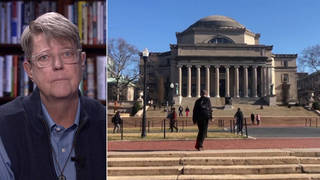
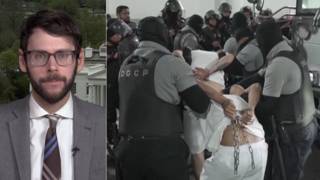
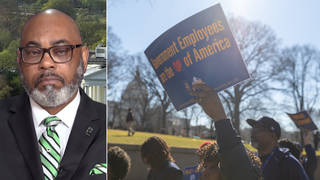





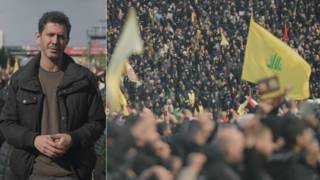
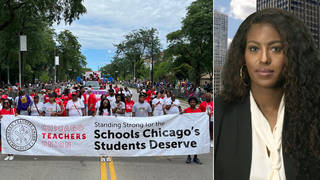
Media Options